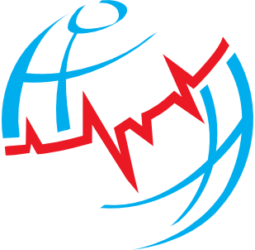Whitepaper

Secure, streamlined, interoperable and patient-centered: MedChainX transforms EMRs and insurance through blockchain technology
To provide the best care for their patients, clinicians, hospitals and other healthcare entities need timely, pertinent clinical information. The lack of access to such data not only results in costlier, less efficient care; it causes errors that can lead to serious adverse events, including death.
The current siloed system often prevents the timely flow of data across healthcare providers and systems. Interoperability has been dubbed by some as health IT’s Holy Grail. It’s a cliché, but it’s true: It’s deeply desired yet seemingly unattainable. Interoperability has long been a goal–and a Meaningful Use requirement–but it has yet to be put into practice. Aside from the technological challenges to interoperability, there are those posed by data blocking[1] and the practice of charging patients for copies of their own electronic records.
Comprehensive patient information should automatically–and securely–follow the patient across the healthcare continuum, and patients should have unrestricted access to their own complete medical records. But that rarely happens.
MedChainX, a blockchain-based solution for healthcare, changes the “should” to “will.” Launched in August 2017, MedChainX is the antithesis of the siloed, centralized data stores that dominate healthcare data today.
Beyond push, pull and view
Medical data among institutions is generally shared one of three ways: push, pull or view. But each approach varies by vendor, institution and state law. MedChainX offers a different model altogether.
A patient’s data is stored securely in the community-wide ledger, giving clinicians, hospitals and other relevant organizations access to a patient’s complete health (not just medical) history. Because the entire chain is updated in real time, any changes to medication and allergy lists will be immediately available. That also means there’s no need re-enter the same medical data at each encounter with a new provider or institution. It dramatically reduces the likelihood of costly duplicative –and therefore– wasteful screenings and services.
The MedChainX model provides a decentralized control mechanism. Everyone In the chain has a stake, but no one owns it exclusively. A clear audit trail ensures accountability. This approach allows for control of record access without the need to create custom functionality for each vendor.
This approach also gives patients control over their data, unlike most, if not all, current approaches.
Patient-centered
Patients have full access to their data as well as control over how it is shared.[4] In accomplishing this, MedChainX achieves the ONC’s call for individuals to “have access to longitudinal electronic health information” to which they can add information and “direct … to any electronic location.”
This record would include patient-generated data. It would accept data from the patient’s Fitbit (or other wearable), 23andMe profile, biometric data, etc. Patients can build a holistic record of their medical data and authorize others for viewership, such as physicians providing a second opinion or family members and care guardians.[5] This allows individuals to be consumers of healthcare and to control their own data, insurance and care.
Better insurance claims
MedChainX offers the potential of automating claims adjudication and payment processing, eliminating the need for intermediaries and reducing the administrative costs and time for providers and payors (and thereby also reducing cost and frustration for patients). It would also minimize, if not eliminate, the number of claims that are rejected due to incomplete or inaccurate patient information.
Building on success
We are not reinventing the wheel. The financial services industry has already demonstrated the power of blockchain. The technologies for data storage, security and encryption already exist and are in use today. MedChainX brings together the how and why, to better assist patients, providers and health systems. We think electronic medical records can be made more mobile, reliable, trusted, and secure, and we intend to make it happen.
Understanding blockchain
Blockchain was designed as the distributed accounting platform for cryptocurrencies (e.g., Bitcoin). But it’s an industry-agnostic tool to keep data in an encrypted, distributed, ledger–and to control access to that ledger. [2] It’s decentralized, spread across a synchronized network; all the data are visible to anyone with proper authorization. As a result, there’s no single repository for hackers to target. [3]We’re applying this approach to electronic medical records. MedChainX is decentralizing data while making it more accessible.
Secure and immutable
MedChainX’s decentralization is the key to its security. Once a record is submitted to the chain, it becomes immutable–it can’t be updated or changed. The records are synced and stored on all nodes worldwide. To hack one record, the hacker would have to hack the entire system and change the information in every computer, simultaneously. Not only would that put everyone on alert, but sheer computational power required would be too much for even the most sophisticated hacker.
Credentialed users can add to–but not delete or change–the records. Transactions must be verified by the network.
The system also offers protection against inaccurate information being entered. A consensus algorithm newly entered information against the existing record. So, for instance, if a hospital adds data indicating the patient has blood type A, but existing data block indicates the type is O, then the information will not be recorded in a blockchain.
What MedX offers goes far beyond electronic records, however.
A new healthcare economy
MedChainX will eventually use two units of value, Medshares and Medtokens.
Medshares will be offered in the fourth quarter of 2017. We’ll be using them to build a community around MedChainX and fund development. Medshare holders will use their shares as voting power in in managing development of the MedChainX system.
Medtokens are digital units of value created and managed inside a closed ecosystem. They can be used for network storage allocation, revenue payment cycles, provider incentives and more. This will likely launch in 2018. Given that blockchain developed primarily in the financial sector, it makes sense to apply that concept to the healthcare marketplace.
A blockchain mobile wallet system can allow participants to use Medtokens to purchase health insurance, equipment, medication and other services–including storage space. For example, patients will be given an allotted amount of space to store information for free on the MedChainX network. These Medtokens tokens would allow them to purchase extra space from nodes set up in hospitals systems. Healthcare organizations use tokens in a similar fashion.
We will be using NEO, an open-source blockchain technology focused on real-world transactions, not speculation. NEO integrates digital assets, digital identity, smart contracts and a secure communication protocol into its platform.
Ongoing development is underway for Phase 2.
- Scalability
- Transparency
- MPI (master patient index)
- Data analytics
- E-prescribing
- Automated diagnosis
ICO Development Phase 2 (Medtokens)
********
[1] Report on Health Information Blocking, ONC, April 2015
[2]“Moving Patient Data Is Messy, But Blockchain Is Here to Help,” Wired, Feb. 2017 www.wired.com/2017/02/moving-patient-data-messy-blockchain-help/ [3] “What is Blockchain Technology? A Step-by-Step Guide for Beginners” blockgeeks.com/guides/what-is-blockchain-technology/ [4] Linn L, Koo M. Blockchain for Health Data and Its Potential Use in Health IT and Health Care Related Research. Posted by ONC April 2016 [5] Ekblaw A, Azaria A, Halamka J, Lippman A. “Case Study for Blockchain in Healthcare: ‘MedRec’ Prototype for Electronic Health Records and Medical Research Data.” posted by the ONC April 2016
